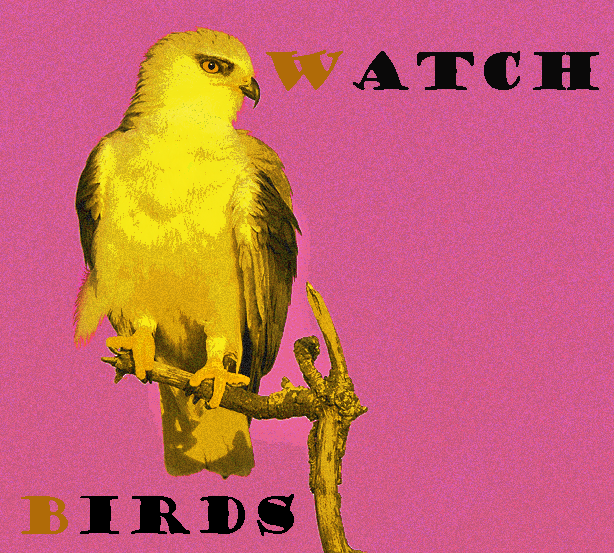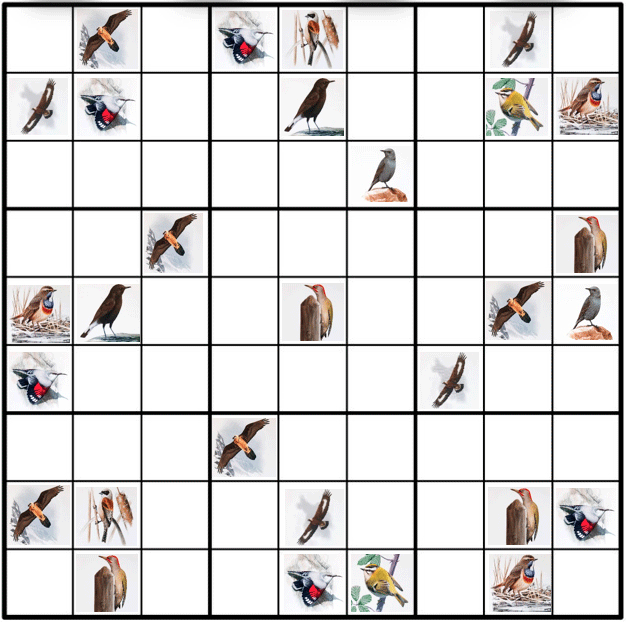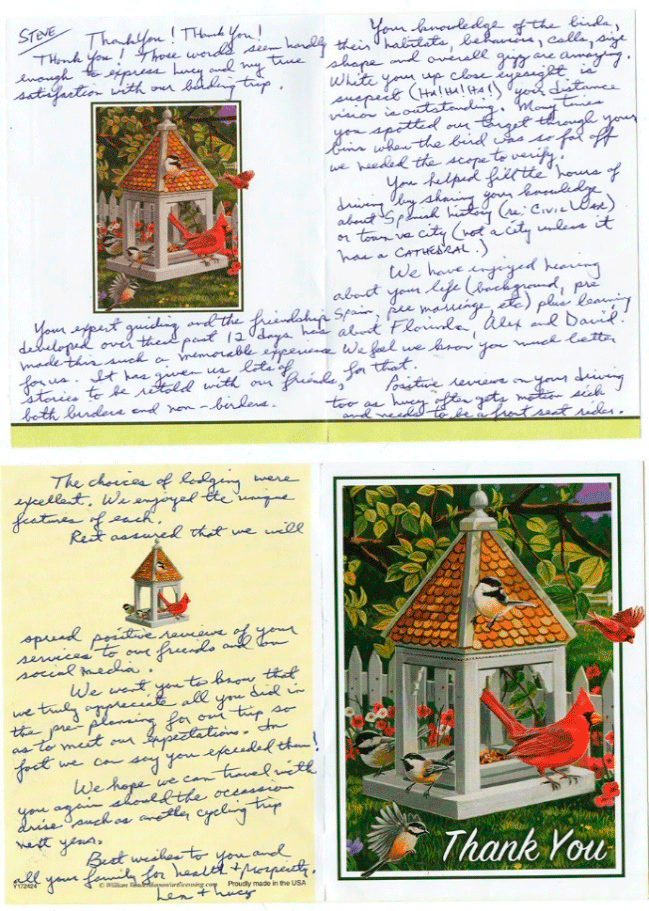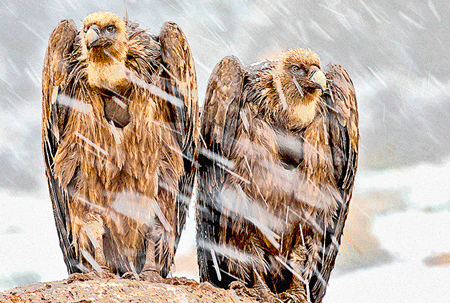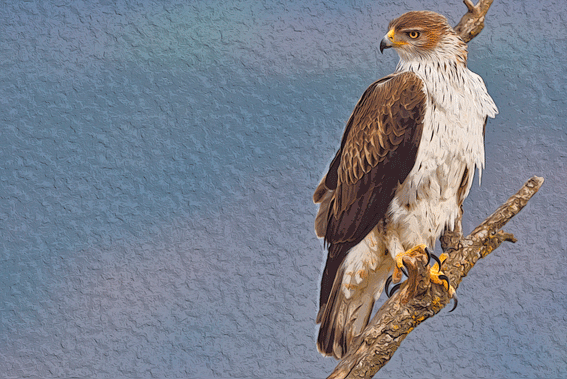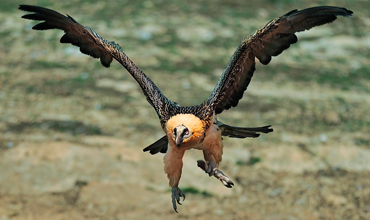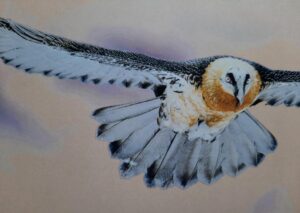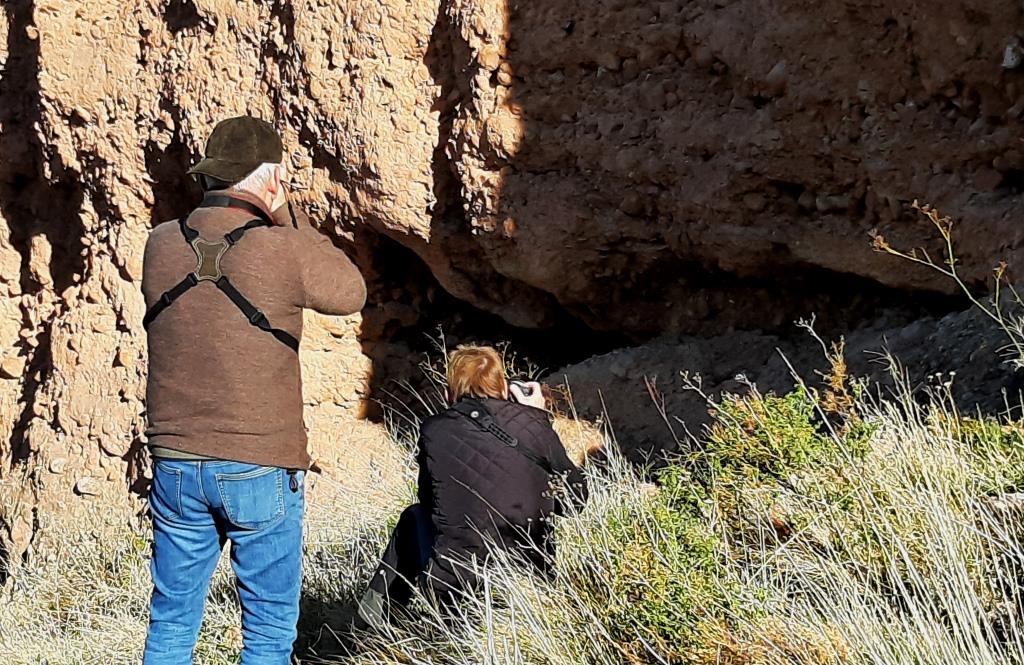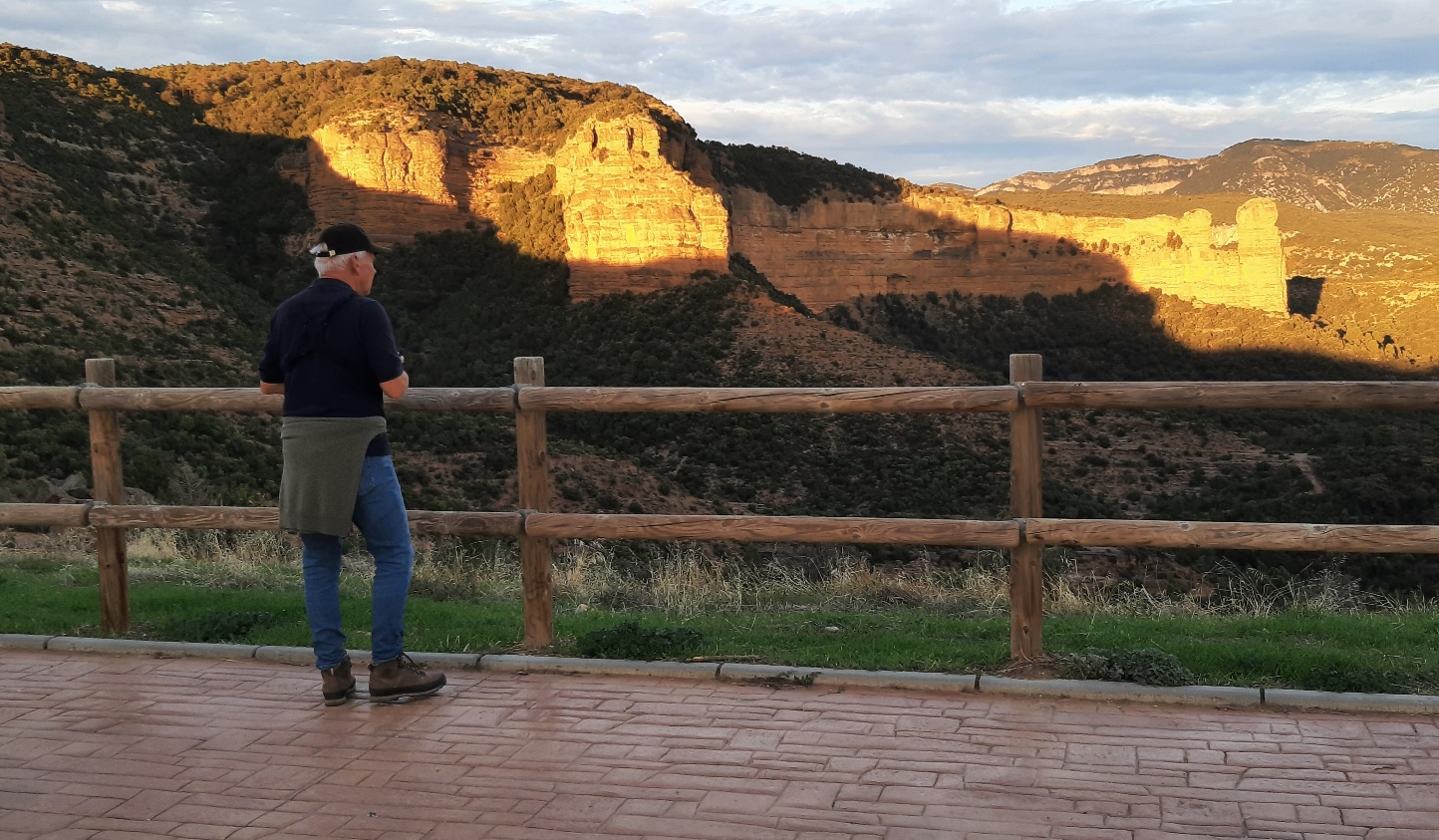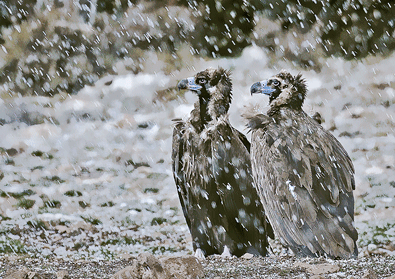
Black or Cinereous or Monk Vultures in the snow
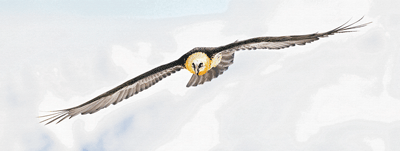
Lammergeier, or Bearded Vulture, in flight over the Pyrenees, Spain
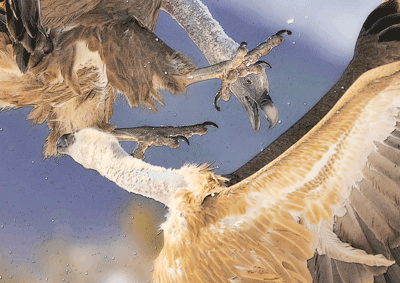
Griffon Vultures in action
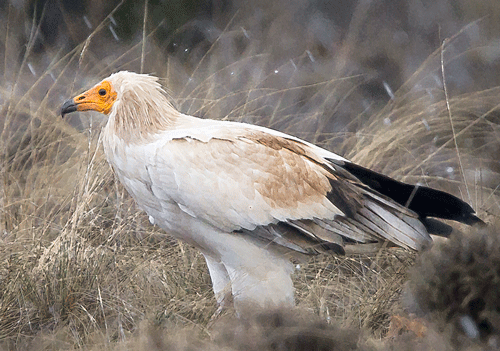
Egyptian Vulture in the Pyrenees, Spain
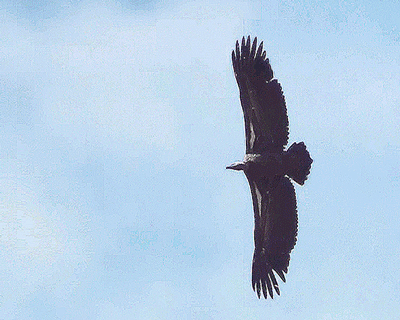
Rüppell’s Vulture, Tarifa, Spain
Spain is clearly the European stronghold for all of these species. Here’s a quick look at the essentials:
Bearded Vulture (times are tough when I feel obliged to phase out the use of Lammergeier, but, oh well…)
Spanish population = 163 breeding “pairs” (moderate increase)
Total European population = 465 breeding pairs (estimate)
The Spanish population represents about 35% of the European total.
Black (oh, Cinereous) Vulture
Spanish population = 2550 breeding pairs approx. (moderate increase)
Total European population = 2750 breeding pairs
The Spanish population represents about 93% of the European total
Egyptian Vulture (no name change here?)
Spanish population = 1400 to 1600 breeding pairs (stable)
Total European population =2688-2931 breeding pairs
The Spanish population represents about 55% of the European total
Griffon Vulture
Spanish population = 30100-36500 breeding pairs (large increase)
Total European population = 35000-42000
The Spanish population represents about 87% of the European total
Rüppell’s Vulture
Spanish population = up to 5 breeding pairs (mixed) but no confirmation of breeding. This is the total of the European population.
Click on this link to download the pdf by the Vulture Conservation Foundation with a very interesting summary of the populations, distribution etc of all five European Vultures (Bearded Vulture, Black Vulture, Egyptian Vulture, Griffon Vulture and Rüppell’s Vulture).

